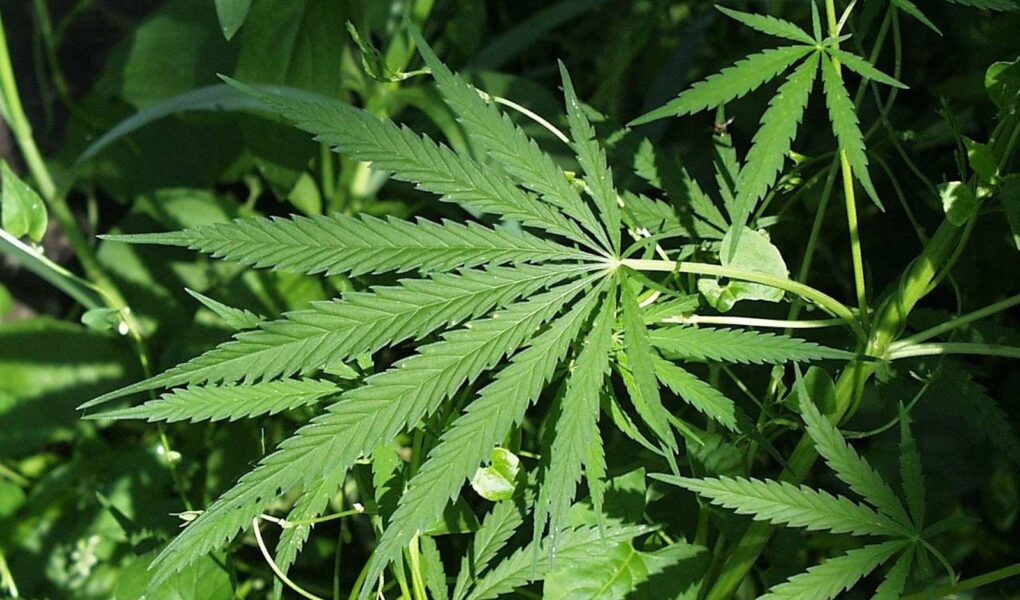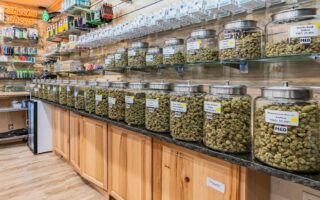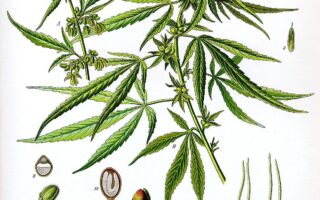Title: Unraveling the Green Thread: Hemp Plant vs. Marijuana Plant
In the vast tapestry of botanical wonders, two plants often entwine themselves in misconceptions and intrigue: hemp and marijuana. Though they share a common ancestor and exhibit striking similarities in appearance, these green companions diverge dramatically in purpose, chemical composition, and cultural significance. As the world grows increasingly fascinated with sustainable solutions and alternative therapies, understanding the distinctions between hemp and marijuana becomes essential. This article invites you to explore the nuanced differences between these two plants, shedding light on their unique characteristics, uses, and roles in both contemporary society and ancient traditions. Join us on this enlightening journey as we unravel the green thread that connects—but ultimately distinguishes—these remarkable members of the cannabis family.
Table of Contents
- Exploring the Distinct Botanicals of Hemp and Marijuana
- Understanding the Chemical Composition: Cannabinoids and Terpenes
- Cultivation Practices: Growing Differences for Optimal Yield
- Legal Implications and Societal Perceptions: Navigating the Confusion
- Q&A
- The Conclusion
Exploring the Distinct Botanicals of Hemp and Marijuana
The hemp plant and the marijuana plant, while stemming from the same species, exhibit fascinating differences in their botanical composition. The main differentiator lies in their cannabinoid profiles, which results in distinct uses and benefits. Hemp is primarily cultivated for its fiber, seeds, and oils, boasting a higher concentration of CBD (cannabidiol) and negligible levels of THC (tetrahydrocannabinol). In contrast, marijuana is cultivated for its psychoactive properties, having higher levels of THC and varying amounts of CBD, making it a popular choice for recreational and medicinal consumers.
In terms of physical characteristics, there are notable distinctions between the two plants. Hemp plants tend to grow taller and have thinner stalks, making them more suitable for industrial applications, while marijuana plants are bushier and shorter, often containing thicker leaves rich in resin. Below is a comparison highlighting their key differences:
| Aspect | Hemp | Marijuana |
|---|---|---|
| Cannabinoid Content | High CBD, Low THC | High THC, Variable CBD |
| Plant Structure | Tall and Thin | Bushy and Short |
| Primary Uses | Textiles, Food and Oil | Recreation, Medicine |
Understanding the Chemical Composition: Cannabinoids and Terpenes
The intricate world of cannabinoids and terpenes reveals the fascinating chemistry behind the hemp and marijuana plants. Both categories of plants belong to the Cannabis genus, yet they exhibit distinct chemical profiles that significantly impact their effects and uses. Cannabinoids are chemical compounds that interact with the body’s endocannabinoid system, which plays a role in maintaining homeostasis. Some of the most well-known cannabinoids include THC (tetrahydrocannabinol), responsible for the psychoactive effects often attributed to marijuana, and CBD (cannabidiol), which is famed for its potential therapeutic benefits without inducing a high. In comparison, hemp typically contains higher concentrations of CBD and minimal THC, making it ideal for medical and industrial applications.
Complementing cannabinoids are terpenes, organic compounds that give cannabis its diverse range of aromas and flavors. Each strain of hemp or marijuana contains a unique blend of terpenes, which not only contribute to scent but also influence the plant’s overall effects. Some commonly found terpenes include:
- Limonene – often found in citrus fruits, linked to mood enhancement.
- Myrcene – prevalent in hops and lemongrass, associated with relaxing effects.
- Pinene – reminiscent of pine needles, believed to promote alertness.
Understanding the balance of cannabinoids and terpenes in these plants can pave the way for tailored therapies and more informed consumer choices. A deeper comprehension of this chemical landscape highlights the multifaceted nature of cannabis, transcending the simplistic categorization of hemp versus marijuana.
Cultivation Practices: Growing Differences for Optimal Yield
When it comes to maximizing yield, the cultivation practices for hemp and marijuana plants diverge markedly. Hemp, characterized by its tall stature and durable stalks, thrives in well-drained sandy loam or clay soils, requiring substantial water but less attention to nutrient density. In contrast, marijuana plants, known for their bushy growth, demand a nutrient-rich environment, often benefitting from tailored fertilizers that boost their potency and flavor profiles. Growers must pay particular attention to light cycles, ensuring hemp receives ample sunlight to bolster its fiber production, while marijuana requires specific light wavelengths during various growth phases to optimize cannabinoid concentration.
Additionally, the methods of propagation can significantly influence the yield of each plant type. For hemp, seed propagation typically yields higher biomass, while clonal propagation can be employed for superior strains of marijuana—enhancing desired effects and traits. Here’s a quick comparison:
| Characteristic | Hemp | Marijuana |
|---|---|---|
| Optimal Soil Type | Well-drained, sandy loam | Nutrient-rich, loamy soil |
| Water Needs | High | Moderate |
| Light Requirement | Full sunlight for growth | Specific light cycles based on growth phases |
| Propagation Method | Seed propagation | Clonal propagation |
Legal Implications and Societal Perceptions: Navigating the Confusion
The distinction between the hemp plant and the marijuana plant often leads to a myriad of legal complexities that vary significantly from one jurisdiction to another. In many countries, hemp is legally recognized for its low THC content, which is typically below 0.3%, compared to marijuana, which contains much higher levels of THC—a psychoactive compound responsible for the “high” associated with cannabis use. This difference plays a critical role in regulatory frameworks that govern cultivation, distribution, and use. The confusion surrounding these classifications can have serious implications, not only for consumers but also for businesses trying to navigate the evolving landscape of cannabis legislation.
Public perception further complicates these legal nuances. Many still associate hemp with marijuana due to the shared cannabis family lineage, leading to misconceptions about hemp’s uses and benefits. To clarify this, consider the following points about societal attitudes:
- Negative stigma: Persistent societal biases against marijuana often spill over to hemp.
- Misunderstanding of benefits: Lack of awareness about hemp’s potential in industries like textiles and biofuels.
- Changing perceptions: Increasing legalization of marijuana is slowly shifting public views on cannabis as a whole.
| Aspect | Hemp | Marijuana |
|---|---|---|
| THC Content | Below 0.3% | Above 0.3% |
| Legal Status | Generally legal | Varies by region |
| Primary Uses | Industries and wellness | Recreational and medicinal |
Q&A
Q&A: Understanding the Distinction Between Hemp and Marijuana Plants
Q: What exactly is the difference between hemp and marijuana?
A: Both hemp and marijuana belong to the Cannabis sativa species, but they serve very different purposes. Hemp is cultivated primarily for its industrial uses, like textiles, paper, and food. In contrast, marijuana is grown for its psychoactive properties, primarily due to the high levels of THC (tetrahydrocannabinol), which is the compound responsible for the “high” feeling.
Q: Can you explain the THC content in hemp and marijuana?
A: Absolutely! Hemp generally contains 0.3% or less THC, making it non-intoxicating and legal in many places. Marijuana, however, is bred to contain much higher THC levels, often between 5% to over 30%, depending on the strain. This distinction is crucial, especially from a legal and health perspective.
Q: Are there any other active compounds that differentiate hemp from marijuana?
A: Yes, besides THC, hemp and marijuana also differ in their levels of CBD (cannabidiol). Hemp tends to have higher concentrations of CBD, which has been studied for various therapeutic benefits without the psychoactive effects of THC. Marijuana may have varying levels of CBD depending on the strain, but it generally focuses on maximizing THC content.
Q: What are the primary uses of hemp?
A: Hemp is incredibly versatile! It is used to make textiles, biodegradable plastics, construction materials, skincare products, and even food supplements. Beyond that, hemp seeds are rich in protein and essential fatty acids, making them a nutritious addition to diets.
Q: Is hemp environmentally friendly?
A: Yes, hemp is often celebrated for its eco-friendliness. It grows quickly without the need for pesticides and herbicides, can improve soil health, and its cultivation requires less water compared to many conventional crops. This makes it a sustainable choice for numerous industries.
Q: Are there legal distinctions between hemp and marijuana?
A: Yes, the legal frameworks for hemp and marijuana vary widely. In the United States, the 2018 Farm Bill legalized hemp, as long as it contains 0.3% THC or less. Marijuana, however, remains illegal at the federal level, although many states have legalized it for medicinal or recreational use. This patchwork of laws can lead to confusion, so it’s essential to be informed about local regulations.
Q: How can I tell if a product is made from hemp or marijuana?
A: It can be tricky, but labeling is key! Products derived from hemp should clearly state this on their packaging. Additionally, products high in THC typically come from marijuana plants. For CBD products, a certificate of analysis from a third-party lab can confirm the THC content and the source of the plant.
Q: Can I use hemp for medicinal purposes?
A: Yes, hemp-derived CBD products are commonly used for their potential health benefits, such as pain relief and anxiety management. However, it’s essential to consult with a healthcare professional before starting any new supplement regimen, especially if you’re considering the therapeutic effects of CBD.
Q: Are there social stigma differences between hemp and marijuana?
A: Unfortunately, yes. While perceptions are changing, marijuana still carries social stigma due to its psychoactive effects and historical legal status. Hemp, on the other hand, is increasingly being embraced for its versatility and sustainability, often viewed as a “cleaner” aspect of the cannabis family.
Q: What can we expect for the future of hemp and marijuana cultivation?
A: With growing acceptance and demand for both hemp and marijuana, especially in markets focused on sustainability and health, future cultivation practices will likely become more refined and regulated. As research continues to unfold, we can expect innovative products and uses for both plants to emerge, fostering a deeper understanding among consumers.
In essence, while hemp and marijuana may appear similar at first glance, their differences are profound and significant, influencing everything from their uses to their perceptions in society. Understanding these distinctions not only enhances our knowledge but also enables informed choices in a rapidly evolving landscape.
The Conclusion
In the intricate tapestry of plant life, the hemp plant and marijuana plant stand as two distinct threads, each woven with its own unique properties and potential. While they share a common ancestor, their diverging paths have led to the creation of versatile applications and cultural significance that resonate in diverse ways across society. Understanding the differences between these two plants is not just a matter of botanical curiosity; it’s a gateway to appreciating the wide array of uses they offer—ranging from sustainable materials and health benefits to recreational enjoyment.
As we continue to explore the myriad possibilities of both hemp and marijuana, it becomes clear that these plants hold the promise of innovation, healing, and environmental stewardship. Whether you’re drawn to the robust fibers of hemp or the complex cannabinoids of marijuana, the conversation around them is ever-evolving, grounded in science and infused with creativity. So, as we close this chapter, let us foster a sense of respect and curiosity towards these remarkable plants, each with their own story, waiting to be told. The journey of discovery is just beginning, and in the world of hemp and marijuana, there are still many more pages left to turn.


